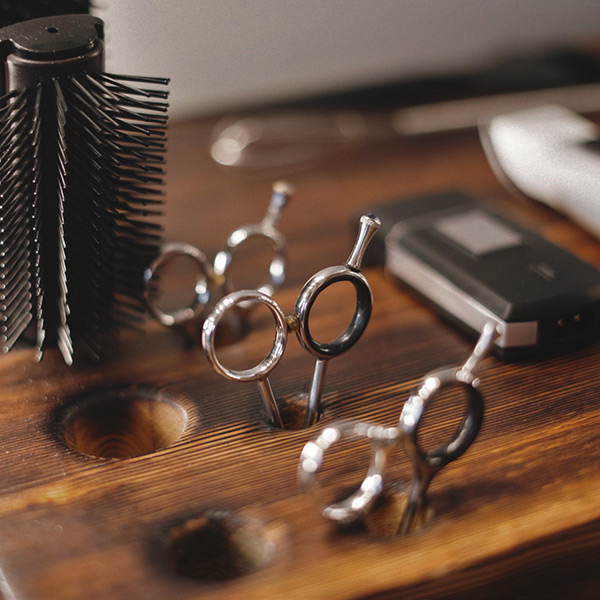Find Greater Confidence with New Hair Growth
Hair loss is very common for both men and women. It can be the result of your genes, hormonal changes, medical conditions or simply aging — but it can affect your confidence and quality of life. There are great treatments available to prevent and treat many types of hair loss.

Both Men and Women Experience Hair Loss
Both men and women can experience hair loss and hair thinning. For either, “pattern hair loss” is generally due to shortening in the hair’s growing phase (anagen) and increased shedding between phases. The hair follicle can also change, producing thinner hair (follicular miniaturization).
The reasons many women experience hair loss are the same reasons that men experience hair loss: androgenetic alopecia, genetics, stress, medications or other conditions. In men, hair loss usually begins above the temples or at the hair at the top of the head.On the other hand, many women begin with gradual thinning at the part line, followed by hair loss diffusing from the top of the head. A woman’s hairline rarely recedes far and women don’t often become bald.
Hair Transplant Before & After
* Each patient is unique and individual results may vary.
Hair Transplant and Hair PRP: Is it worth it?
Hair restoration treatments (like follicular unit extraction and strip harvesting) or hair regrowth treatments (like PRP) are more effective than a lifetime of over-the-counter hair products and shampoos. Individual results vary, but hair transplants and hair regrowth treatments can have longlasting and even permanent results — especially when you follow the recommended treatment and maintenance schedules.
Ultimately, you are treating the scalp and hair follicles directly and investing in real hair growth.
It’s important to remember, too, that the typical hair restoration patient is probably younger than you think they are. The International Society of Hair Restoration reported that the average age of patients who underwent hair restoration surgery for the first time in 2019 were between the ages of 26 to 35 years old (45.2% of all patients). The next largest demographic were patients between the ages 36 to 45 years old (42.2%).
The earlier you commit to a true hair restoration treatment, the longer you can enjoy the results.
PRP for Hair Restoration Before & After
* Each patient is unique and individual results may vary.
Why do we lose Confidence when our Hair Thins?
For many of us, our hair is the one accessory we’ve worn every day. It showcases our signature styles and makes us feel young, vibrant and healthy. When we lose an identifying part of ourselves, it’s understandable to feel less confident. Despite how common it is, psychologists have connected hair loss and baldness to depression, anxiety and poor self-image.
You should should consider hair loss treatments if:
- You have a receding hairline or diffuse hair loss
- You have sections or areas of hair loss (not completely bald)
- You are in early stages of hair loss or only just begun losing hair
- You have generally thinning hair
- You don’t have an autoimmune disease or blood disorder that could complicate injections
- You don’t have a major skin concerns or disorders
- You are prepared for multiple treatments
Why Choose Quintessa
Dr. Daniel Butz and his team have over 30 years of combined hair restoration experience, providing the latest in innovative hair loss treatment techniques with confidence-boosting results. He looks forward to providing you with comprehensive, patient-driven care that you’ll be able to count on for years to come.
How can I treat Hair Loss or Grow more hair?
Not all hair restoration treatments are right for every patient. A consultation with a board-certified surgeon will be helpful to assess your stages of hair loss, preventative measures taken, hair treatment options and expected outcomes.
Hair PRP
Platelet-rich plasma is created by drawing blood and isolating the plasma within it, concentrating the platelet-rich plasma cells. The platelets found within your plasma are responsible for blood clotting, growth and healing. It is then injected back into the body to reinvigorate healthy cell growth. PRP treatments have shown promising results for hair loss, skin rejuvenation, sports injuries (like tendons, sprains and pulled muscles), osteoarthritis and more.
Plasma, rich with the platelets’ growth factors, is injected across the scalp to encourage new hair growth and stimulate the hair follicles. PRP hair treatments has been shown to stop the progressive nature of hair loss, increase hair density and overall health.
Follicular Unit Extraction (FUE)
This is a method in which individual hair follicles are carefully removed one at a time and then transplanted to their desired location. This procedure leaves no linear scarring and has a quicker recovery.
Strip Harvesting
Also known as follicular unit transplant (FUT) is the more traditional technique for hair transplantation. The surgeon harvests a strip of skin from the back of the patient’s scalp, in an area that is typically resistant to hair loss. This is then separated into individual follicular units and transplanted to the patient’s desired location.

